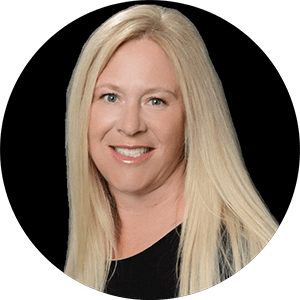
By Amanda Reineke, CEO and Co-founder, Notice Ninja

Tax and agency compliance has always been complex, but the volume and urgency facing Professional Employer Organizations (PEOs) today is unprecedented. Some firms manage thousands of agency notices per month across federal, state and local jurisdictions. These include unemployment claims, garnishments, tax rate notices and requests for additional documentation.
Each one comes with a deadline, a client impact and the risk of penalties if not handled correctly. What used to be a back-office task is now a front-line operational pressure. Manual processes are struggling to keep up.
Most PEOs still rely on shared inboxes, spreadsheets and patchwork systems to track and resolve notices. These tools were not built for the scale and coordination required across departments. The result is duplicated efforts, lost visibility and delayed responses that affect both compliance and client trust.
Compliance Is Now a Service Standard
Each agency notice represents a potential disruption to a client’s payroll, benefits or tax position. When notices go unresolved or are handled inconsistently, clients experience frustration. They may receive penalties they were not expecting or be asked to resubmit information they already provided. In more serious cases, their payroll may be affected or filings delayed.
Clients may not always see the mechanics of compliance, but they will notice when something goes wrong or when answers are slow to come. That makes tax-notice handling a key part of client experience. The PEOs that handle this well are positioned to retain clients longer, scale operations with confidence and differentiate themselves from less-organized competitors.
Internal Teams Are at Capacity
Most notice handling crosses multiple teams, including payroll, tax, benefits and compliance. Without a centralized process, responsibilities are unclear. One team may think another is following up. A deadline may pass without anyone realizing it. These breakdowns are especially risky when notices include financial penalties or audit exposure.
Even highly experienced teams are stretched thin. Tracking notices manually takes hours every week. And, as client volume grows, so does the workload. Adding head count is not always the answer, especially in a tight labor market. That is why PEOs are beginning to rethink the infrastructure that supports their compliance operations.
Structured intake, routing and resolution processes help teams stay aligned and reduce handoff issues. Instead of working in silos, staff know exactly who is responsible, where a notice stands and when it needs action. This clarity improves performance and reduces internal friction.
Regulatory Complexity Is Increasing
PEOs must stay current with a wide range of tax and employment rules across jurisdictions. Each state has its own requirements for unemployment insurance, garnishments and tax rates. These rules are not static. They shift often, and agencies are increasing enforcement.
As compliance requirements grow, so do the risks of missing a notice or misunderstanding its intent. Manual systems do not scale well in this environment. They rely on institutional knowledge and individual follow-up. When a key staff member is unavailable, or when new clients are added, processes break down.
Scalable compliance infrastructure creates consistency. PEOs can apply the same standards across all notices, all clients and all states. That reduces variability and improves audit readiness. It also helps teams respond more quickly and accurately to client questions.
Visibility Is Essential
Leadership teams need visibility into trends, recurring issues and performance metrics. How many notices are received each month? How long does it take to resolve them? Which clients generate the highest volume? Without centralized tracking, these questions are difficult to answer.
With structured processes, data becomes accessible. Teams can identify bottlenecks, monitor resolution times and flag notices that need escalation. Over time, this data supports continuous improvement. It also strengthens compliance posture in audits and agency reviews.
Compliance as Infrastructure
Forward-thinking PEOs are treating compliance like infrastructure. Just as payroll systems and benefits platforms standardize core functions, scalable compliance systems create predictability and efficiency. They reduce risk, lower administrative costs and allow teams to focus on higher-value work.
The goal is not only to avoid penalties, but also to build a service model that supports growth. Clients expect faster answers and fewer surprises. Teams need tools that help them manage increasing volume without burning out. Leadership wants confidence that compliance is under control.
A scalable compliance operation delivers on all of these needs. It creates the foundation for long-term client success and organizational growth.

About Amanda Reineke
Amanda Reineke is the CEO and Co-founder of Notice Ninja, Inc., a digital compliance innovator focused on modernizing tax operations. With deep expertise in scaling high-growth SaaS businesses, Amanda brings a track record of operational excellence and strategic leadership. Prior to Notice Ninja, she co-founded The Agency Notice Tracking Activity (ANTS) and has remained a passionate advocate for empowering women entrepreneurs and building efficient, forward-thinking teams.




